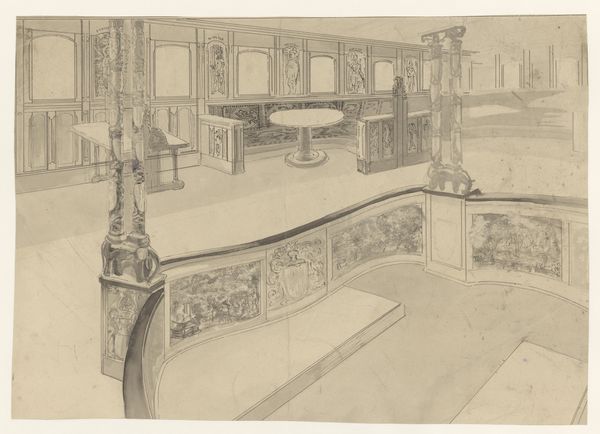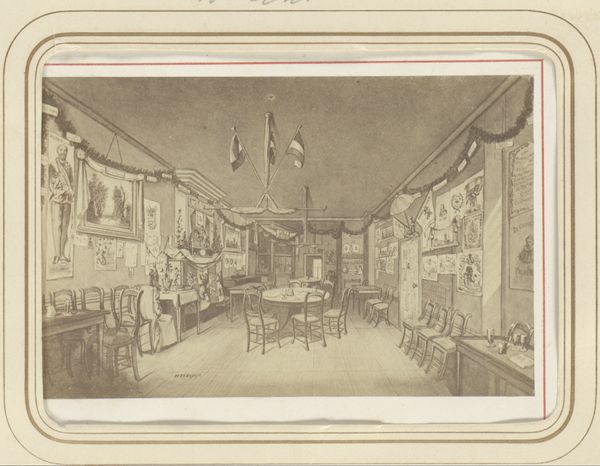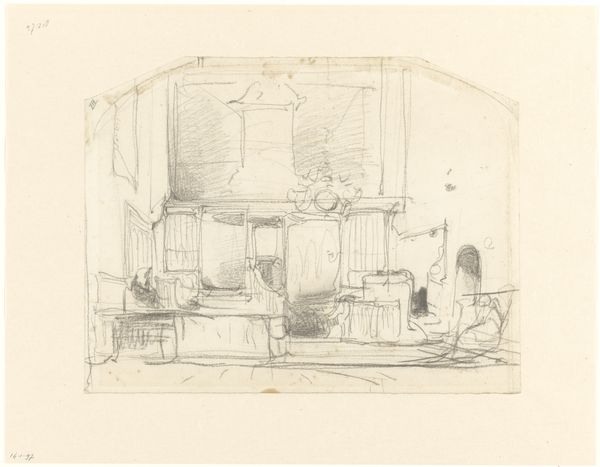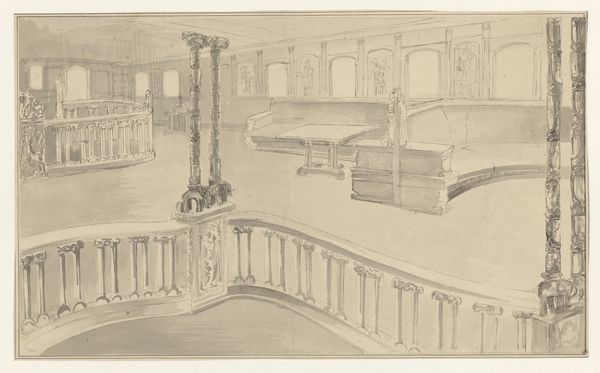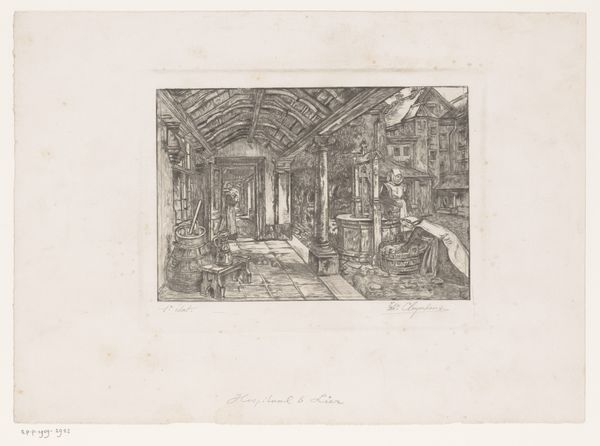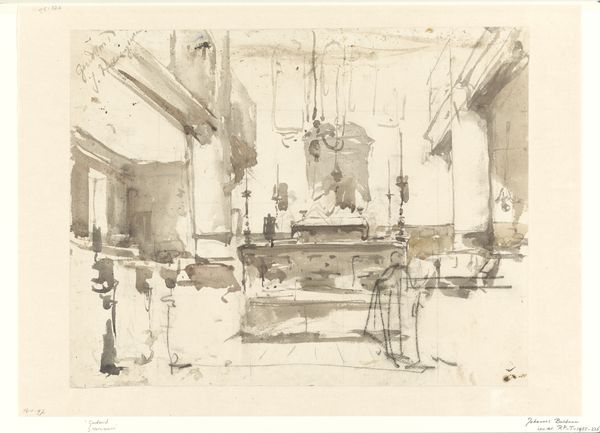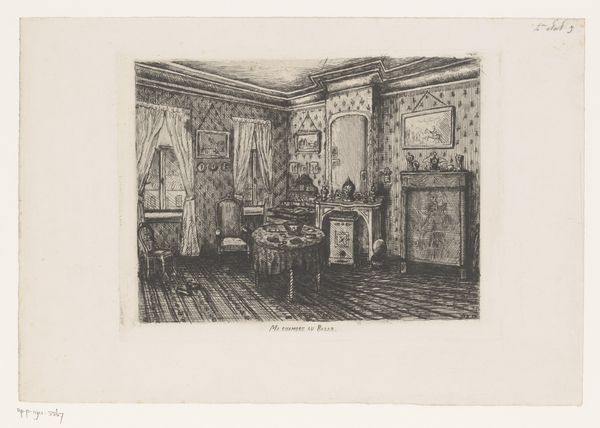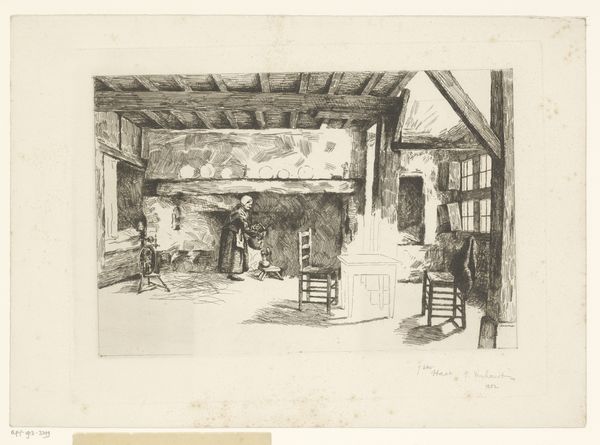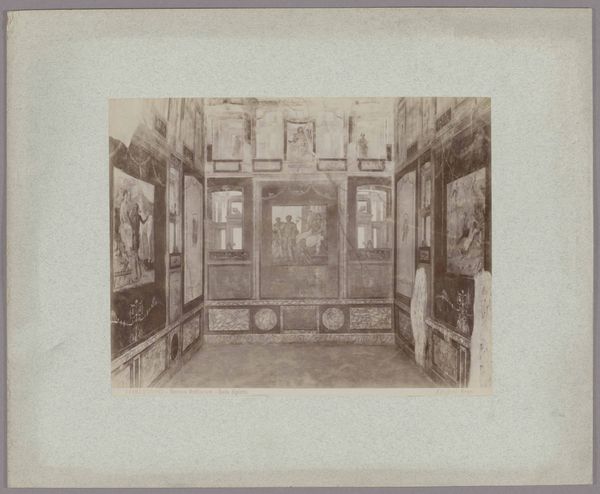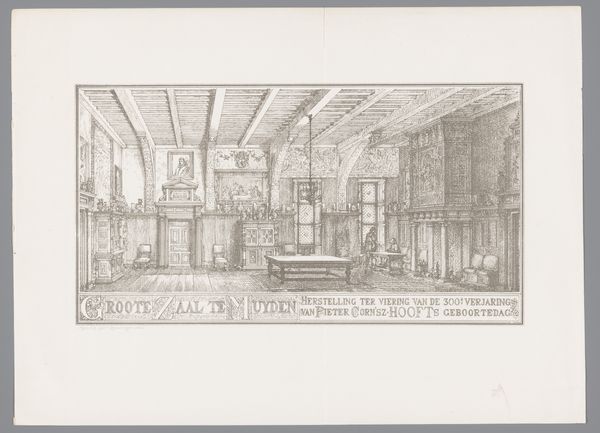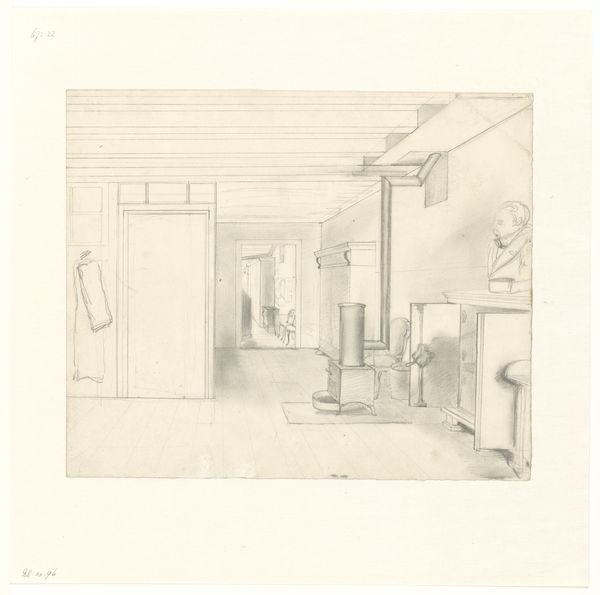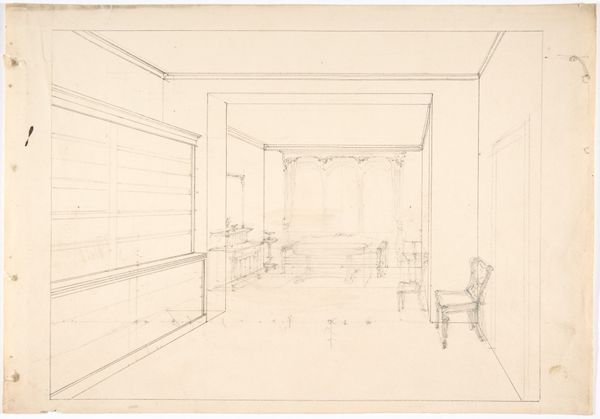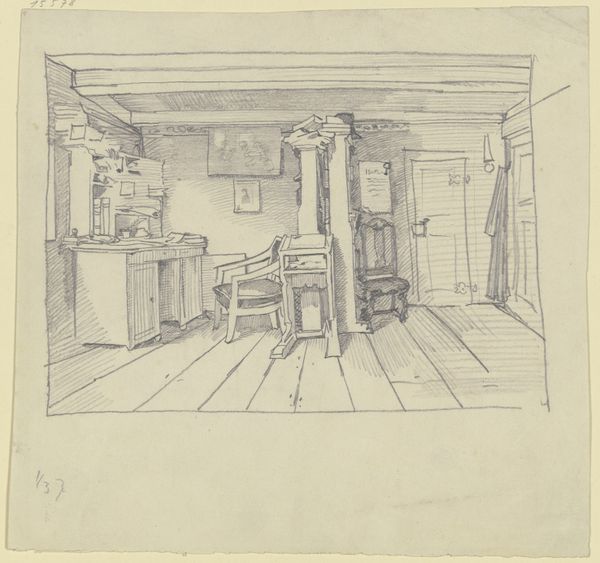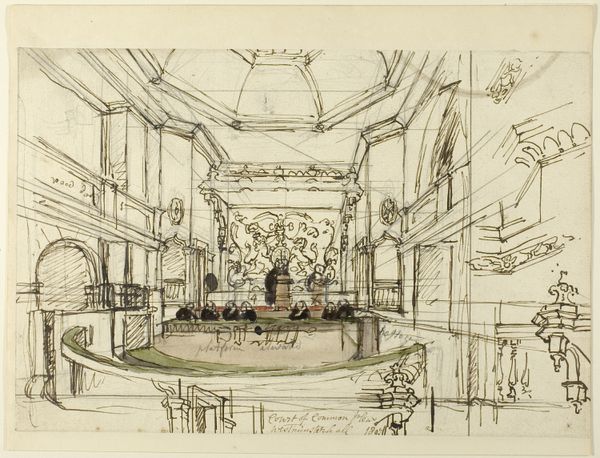
Ontwerp voor een interieur met twee tafels en vijf stoelen 1874 - 1945
0:00
0:00
drawing, etching, paper, ink, pencil, architecture
#
drawing
#
etching
#
etching
#
paper
#
ink
#
geometric
#
pencil
#
architecture
Dimensions: height 282 mm, width 325 mm
Copyright: Rijks Museum: Open Domain
Curator: Here we have "Ontwerp voor een interieur met twee tafels en vijf stoelen," a design for an interior with two tables and five chairs by Carel Adolph Lion Cachet, likely created sometime between 1874 and 1945. Editor: The geometric austerity and limited palette definitely give this an unsettling feeling, a bit sterile even. What strikes me most is the artist’s careful rendering of the light fixtures and furnishings against those bold yellow walls, it hints at the labor that goes into interior design. Curator: The design itself offers a fascinating insight into the evolving concepts of domesticity. You see the artist proposing a specific lifestyle, presenting a design not merely as functional, but as a staged environment. The almost theatrical presentation invites viewers to envision themselves occupying that space. Editor: The repetitive shapes of the furniture, executed through etching, ink, pencil and the use of paper, draw attention to standardized production. It almost serves as a social commentary about the mechanization creeping into even intimate domestic spaces. The lack of ornamentation speaks volumes. Curator: Indeed, but consider that this period saw significant debate around the role of art in everyday life, particularly concerning the rise of industrial production and its impact on craftsmanship. Designs like this suggest a desire to reconcile mass production with artistic principles. The politics surrounding interior design are at play. Editor: Absolutely. By highlighting these minimalist design elements, Cachet indirectly confronts issues around access, labor, and material consumption in furnishing a modern home. And beyond the obvious use, the etching method provides texture while emphasizing the constraints of mass production in fine details. Curator: So, ultimately, the interior suggests more than just a design—it's an invitation to contemplate the social and cultural values reflected in our most private spaces, influencing those values at the time it was made as well as now. Editor: Precisely. It’s about the tangible ways societal forces impact material existence, offering critical insights into our daily environments even today.
Comments
No comments
Be the first to comment and join the conversation on the ultimate creative platform.
